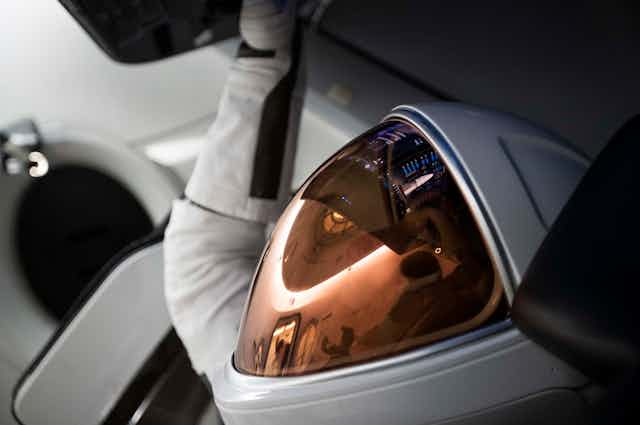Combining 3D printing and tissue engineering, bio-printing has become one of the most promising technologies in the medical field. Research is directed towards the creation of functional tissues for clinical applications.
In recent years, tissue engineering has benefited from rapid advances in the field of additive manufacturing. Indeed, processes based on “bio-printing” techniques have appeared and are gradually becoming widespread in laboratories. They make it possible to create living tissue by adding layers of biomaterials entering into the physiological composition of the tissue that one wishes to reproduce. These biomaterials are implemented in the form of a “bio-ink” which provides the cells with a structure ensuring both their maintenance and their specific positioning in space. Combined with specific culture conditions, this bio-ink is a major asset for guiding cell development and thus generating increasingly complex and differentiated tissues. This new complexity of tissues is precious because it allows them to be increasingly functionalized.
Each human tissue, even the most harmless, fulfills a function in the body. It stems both from the physiological composition of the tissue, but also from its structure. For example, the tissues of bones or teeth can offer great mechanical properties to ensure their function, and those of the skin and other epithelia possess structures that allow protection against external pathogens or against massive water loss. The 3D positioning of the structure of certain cells makes it possible to endow the tissue with specific activities (such as secretion). As technical developments in bio-printing progress and knowledge advances, this field of 3D printing has become a transdisciplinary field, combining tissue engineering, materials science, cell biology and biochemistry. The objective today is to develop fully functional tissues that can be used in the manufacture of 3D printed organs.
1. Operational technologies
Today there are three major bio-printing techniques: inkjet, extrusion and deposition by laser expulsion (fig. 1). Each of these techniques has advantages and disadvantages, related in particular to the resolution obtained, the ability to produce large tissues and the cytotoxicity of the process. Laser deposition is the technique offering the highest resolution (0 to 50 µm, with single cell deposition) without however making it possible to reach objects of physiological size (several centimeters). For its part, the inkjet printing technique has an intermediate resolution (50 to 100 µm). It allows to obtain centimetric objects, that is to say the size of fabrics. Finally, extrusion displays the lowest resolution (around 100 µm) but allows, thanks to the rheology of the bio-inks used, to print living objects of decimetric size.
Fig 1

These technologies have evolved a lot in recent years and manufacturers now provide interesting bio-printers. They have been the basis of numerous proofs of concept produced in the field of tissue engineering. Note, for example, several impressions of complex skin, blood vessels, cartilage or even a retina. Some of the bio-printed tissues have also been implanted in vivo to demonstrate their biological function, but these are still only tissues and not complete organs.
The barrier to the bioprinting of complete functional organs that can be reimplanted remains the vascularization of the bioprinted tissues. Indeed, it would remove two major locks. On the one hand, keeping the printed objects alive throughout the maturation of the organ (which can take several weeks) thanks to the infusion of nutrient medium within the object. On the other hand, the creation of a vascular network with a certain resistance could make possible microsurgery operations allowing the connection of veins or arteries (anastomosis) during implantation.
2. The challenge of cell conservation
In order to produce living and potentially implantable tissues in humans, it is necessary to to include living cells, but above all to keep them alive. They are of course important, because they are the ones that bring functionality and specificity to tissues, either through their own functions or through their positioning. However, bioprinting techniques are processes that can be traumatic for cells and lead to damage of different kinds: lysis, necrosis, apoptosis, senescence, phenotypic drift, deletion, mutation or even loss of physiological function. Thus, it is vital to find a balance between the trauma applied to the cells and the performance of the bio-printing process.
This point of balance is determined on the one hand by the parameters of bio-printing, such as the flow of material, the equipment (shape and diameter of the nozzle), the speed or even the printing resolution, and on the other hand by the rheological properties of the bio-ink. These two factors generate stresses – such as the pressure around the membrane surface – on the cells, causing their possible damage. But it should be noted that the stronger the constraint, the more the cells are at risk of being damaged or traumatized (fig. 2) .
Fig. 2
Constraint can have immediate consequences, such as the lysis of the membranes surrounding the cells and therefore their death, but also so-called programmed consequences. This is particularly the case for apoptosis, programmed and delayed death, but also phenotypic change. This last effect is more insidious since it leads to a change in the functionality of the bio-printed cells which will for example go from a “skin fibroblast” phenotype to a “scar fibroblast” phenotype, whose behaviors will be very different. The effect on the fabric obtained will then be significant and the desired functionalities cannot be obtained. In order to reduce, or even cancel, the risk of cell damage during their use in bio-printing, it is important to understand the formation of stress fields around the cells. This understanding goes first and foremost through an in-depth analysis of the rheological behavior of bio-inks. printing, bio-inks are hydrogels with shear strengths (viscosity) that are more or less significant. Commonly, bio-inks are more or less thick pastes and this is the whole issue of cell damage. To understand the link between viscosity, stress and risk of cell damage within bio-printing techniques, it suffices to make the analogy with people entering a hallway. The latter represents the deposition or ejection nozzles, the people represent the cells and the environment corresponds to the bio-ink. If we take the example of a corridor
Note: This article have been indexed to our site. We do not claim legitimacy, ownership or copyright of any of the content above. To see the article at original source Click Here













